
Cooking is one of the most important survival skills you can learn in this lifetime. That and foraging. Combine the two together and you can cook up fantastic and memorable meals over the fire for yourself, your family and friends.
The best part is, all you need is a stick. No fancy Dutch ovens or pie irons. Not even a grill or a pan.
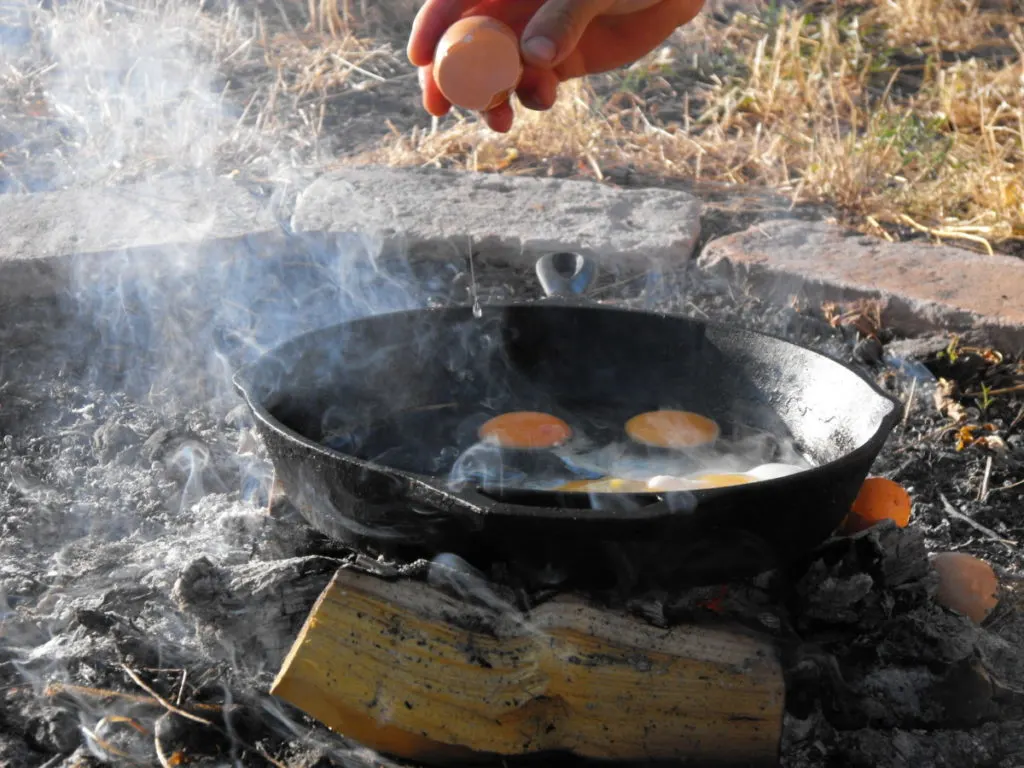
A plain stick will do. With it, you can cook anything from bread to bacon, breakfast to dinner and even dessert.
But first, you’ll have to know what kinds of wood are non-toxic. It also helps to have a dedicated fire pit or a safe place to start a fire. All the ingredients are easy to find, some you’ll already have in your pantry.
Before you get excited to make a campfire tonight, browse through these recipes and see if you can come up with your own ideas. That way, when you’re out and about in the woods (or the backyard), you can have dinner ready in no time at all.
Cooking Over Fire
The ability to cook meat gave our far ancestors a great advantage in terms of health and physical advancement. We’ve been cooking over fire for at least 250,000 years. Possibly a million years ago, or two, but who’s counting?
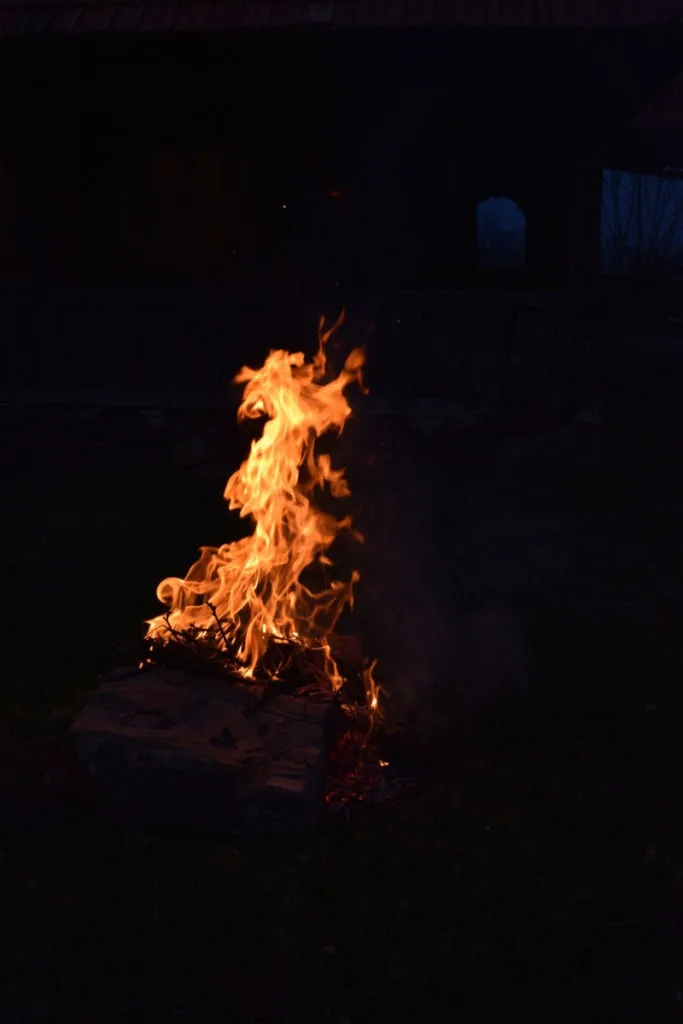
Many of the recipes below are meaty (fires have a way of igniting our past), so let’s talk for a moment about why cooking your meat matters.
When you cook meat, in essence: expose it to high temperatures, you make it easier to chew and digest. Heat breaks down tough fibers and connective tissues, giving it flavor and appreciable texture. At the same time cooking kills bacteria, think E. coli and Salmonella, or parasites Trichinella spiralis, the likes of which no one wants in their gut.
I’m not saying that raw meat is bad either (prosciutto and sausages are appetizing aged examples of this), but cooked definitely has its benefits.
Everyone feels the pull of the campfire, the fiery flames, the glowing embers that you can stare at without burning your eyes. The smoke that follows beauty and so on. It feels so good to sit by a campfire, gaze up at the stars and feel that you are part of the universe.
If you’re hungry, it feels even better to cook over it.
Safe Woods to Use For Cooking Food On a Stick
When cooking over a fire, always use wood that is safe to cook with. Avoid using scrap wood, anything that has been painted or varnished. Rather, use properly dried firewood for the best heat, or search for branches that have come down in storms.
Even then, it is helpful if you understand a thing or two about trees – and the heat they give off when they are burned.
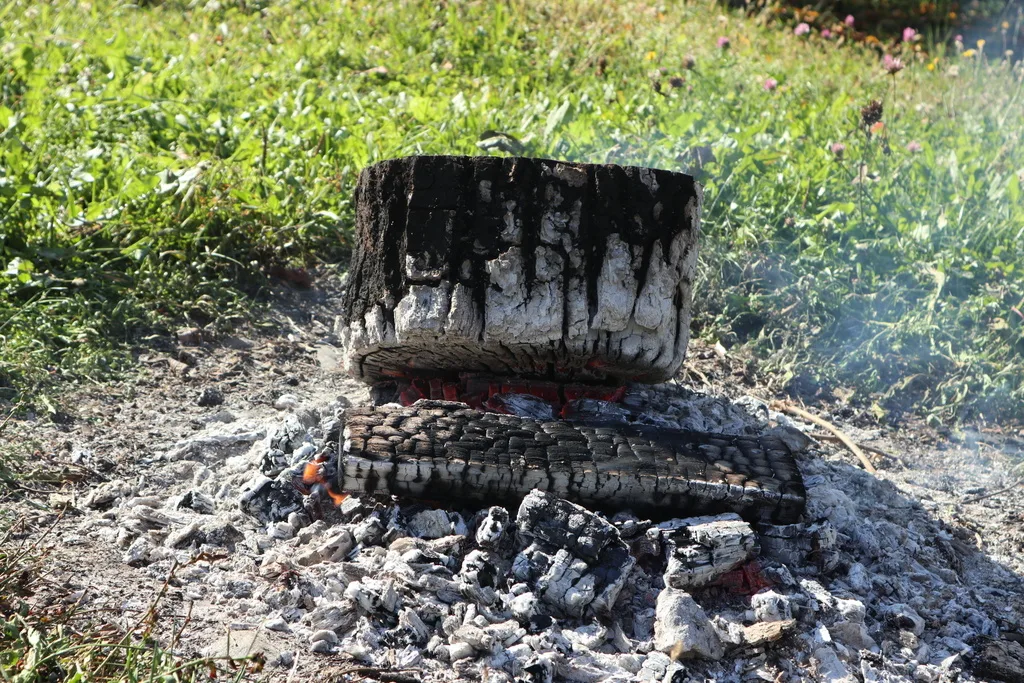
Dry oak, ash and beech are hardwoods that burn steadily for a long time, giving your food an excellent flavor. Apple, cherry and plum, fruit trees in general, are also good for cooking.
Spruce and pine, both softwoods, burn hot and fast. They are fire-starters, rather than fire-cookers. Use this only as a last resort to cook with, as they impart a resiny flavor to your food; the sooty smoke has an unpleasant taste.
You’ll also want to stay away from cedar, hemlock, cypress and everything else in the conifer family.
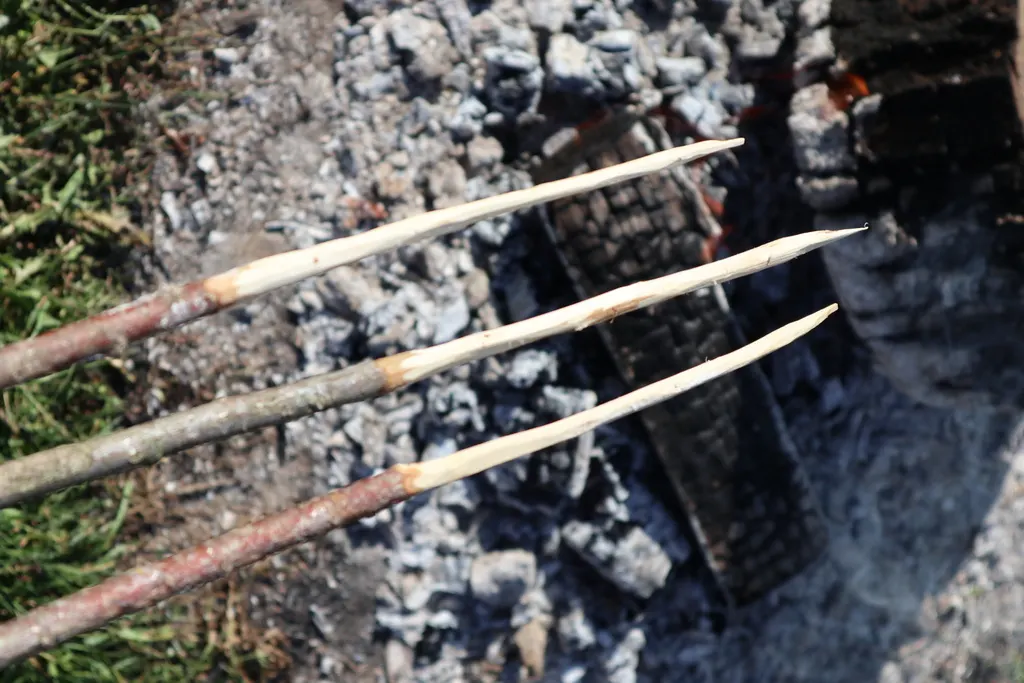
Naturally, when it comes to selecting your sticks, do the same. If you find a stand of willow or hazel nearby, then you’re in luck, for these are the two best woods to cook on.
Easy and Fun Foods to Cook On a Stick
1. Bacon
The simplest of all camp foods is bacon and beans. For obvious reasons, beans take a pot to cook in, but bacon can be fried in a myriad of ways.
If you are feeling really adventurous, you can cook bacon on a rock, use a grill, a frying pan or a stick. On this stick you can simply drape some streaky bacon over, or thread it like a ribbon.
Using fatty bacon, which we call slănină here in Romania, all you need to do is cut a thick strip and pull it over the end of your stick. Not to lose all that juicy and delicious fat, it is good to have either a piece of bread or a baked potato to soak up the drippings.
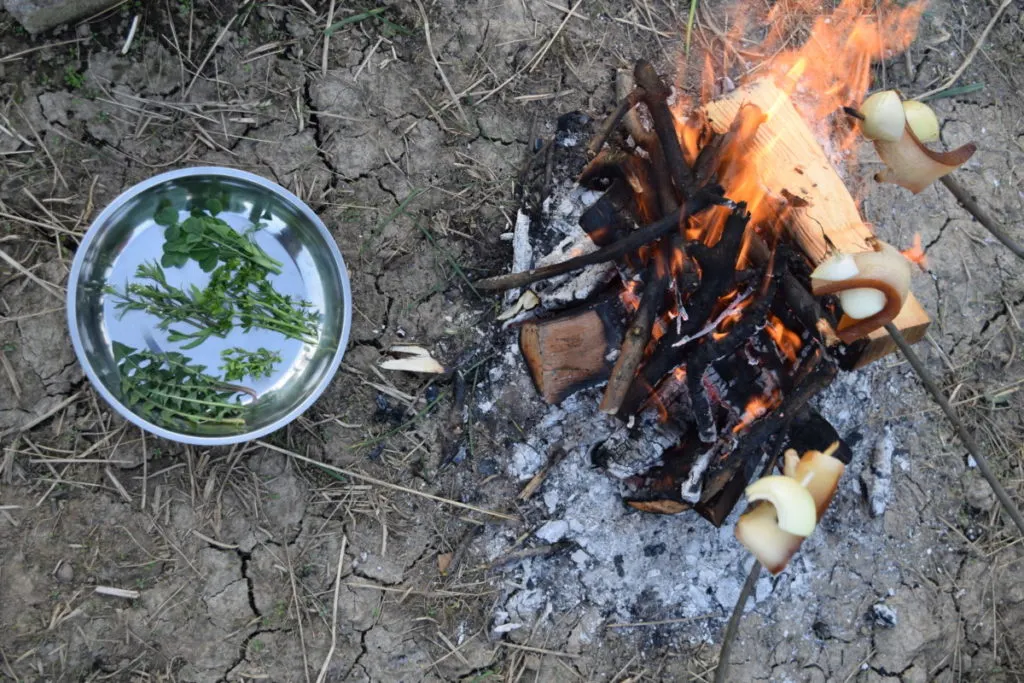
Tips For Cooking Bacon Over A Campfire
Try not to put bacon directly in the flames – unless you are extremely hungry and need to eat right now. A nice, slow heat is desired, glowing embers are the perfect touch.
Bacon does take some time to cook, as will everything cooked over a campfire. Be prepared with a long stick and perhaps with some moments of smoke in your eyes. It’s all part of the fun.
If you’d like to sit back further from the fire, grab a branch that has a “y” in it and poke it into the ground. Sort of like what fishermen use. Utilize that to support your cooking stick, turning it as needed.
The bacon is done when it is crisp to your liking.
Don’t forget to put some campfire coffee on in the meantime if you are cooking your bacon for breakfast.
2. Bacon, Onions and Peppers
Skewer recipes are aplenty for campfire cooking. But you know what? Most of them take actual skewers, not sticks cut from the forest or hedgerow.
The recipes aren’t exactly interchangeable.
What you need for cooking on a stick, are some ingredients that can withstand the piercing of a larger kind. Bacon (as seen above), onions and peppers make for a simple, convenient and tasty meal.
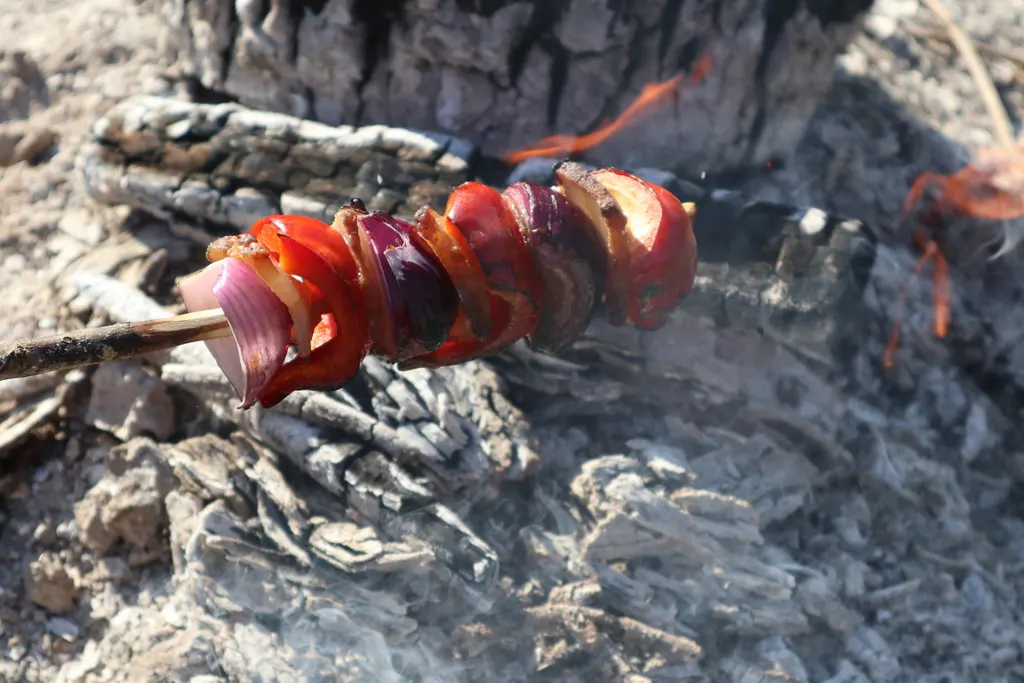
The best way to get all these ingredients on the same stick, is to cut similar size pieces. Being sure to puncture each piece before threading it on the stick.
When it’s all cooked through, eat it as is.
If you tossed a bottle of balsamic vinegar in your backpack, go ahead and drizzle that on for an even tastier bite.
3. Bread On A Stick
Breadsticks over the fire are a great way to begin or end the day. They also happen to be perfect for a midday snack.
Outside of yeast bread on a stick, you can also choose a quicker recipe made with baking powder.
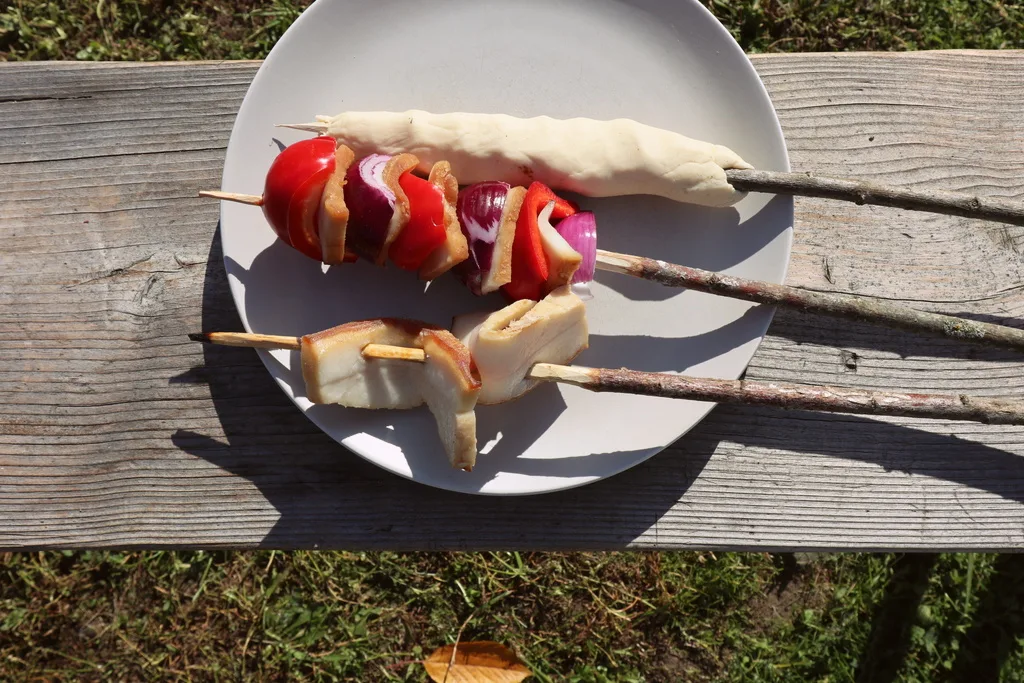
To make them more than just plain bread, all you have to do is add a few more ingredients:
- add oregano or pizza spices and dip them in marinara sauce
- toss a handful of shredded cheese into the batter
- forage for some wild greens (nettle, dandelion, plantain), chop them finely and add to the dough before cooking
- add sugar and cinnamon to the batter for a delicious dessert
- finely chop up sausage and beat an egg into the batter for a hearty breadstick
Plain and simple or intensely flavorful, cooking bread on a stick is a wonderful way to bond around the campfire.
Basic Ingredients for Bread On a Stick
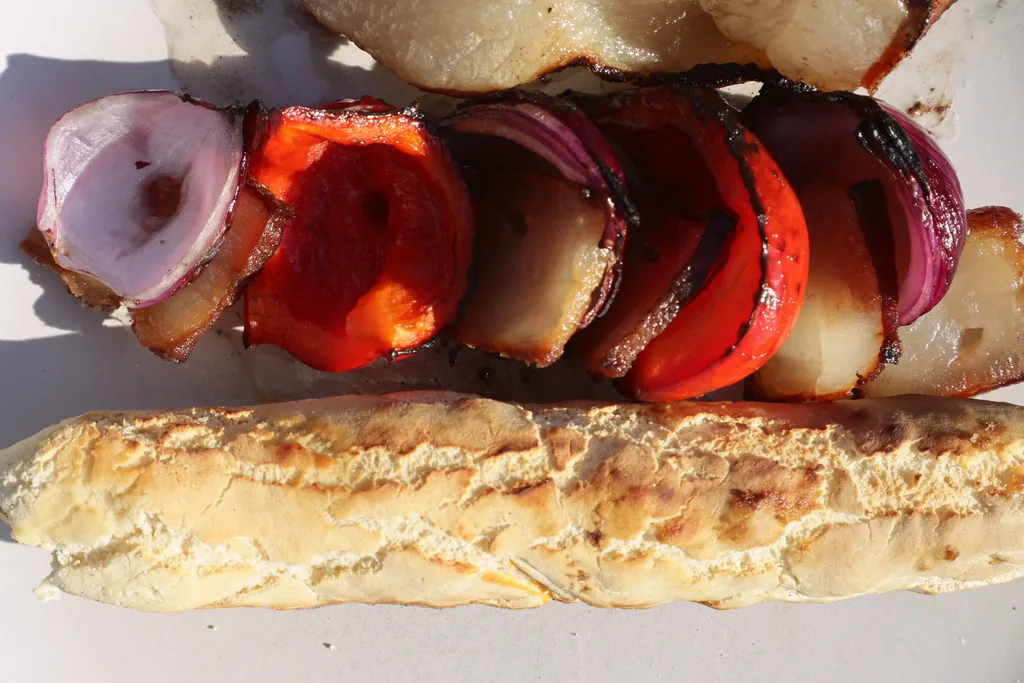
- 2 cups flour (it can be gluten-free as well)
- 2 tsp. baking powder
- 5 T. sugar or honey
- 1 tsp. salt
- 1/4 cup cooking oil
- 2/3 cup water
Mix all dry ingredients, then add oil and water. Stir and knead until dough is nice and soft.
Divide dough into as many portions as you wish to cook on a stick. Wrap each ball of dough around the end of a green stick (bark removed).
In the end, dip them in homemade jam, soft cheese, honey or chocolate spread. Sweet or salty? How about one of each.
4. Pigs in a Blanket
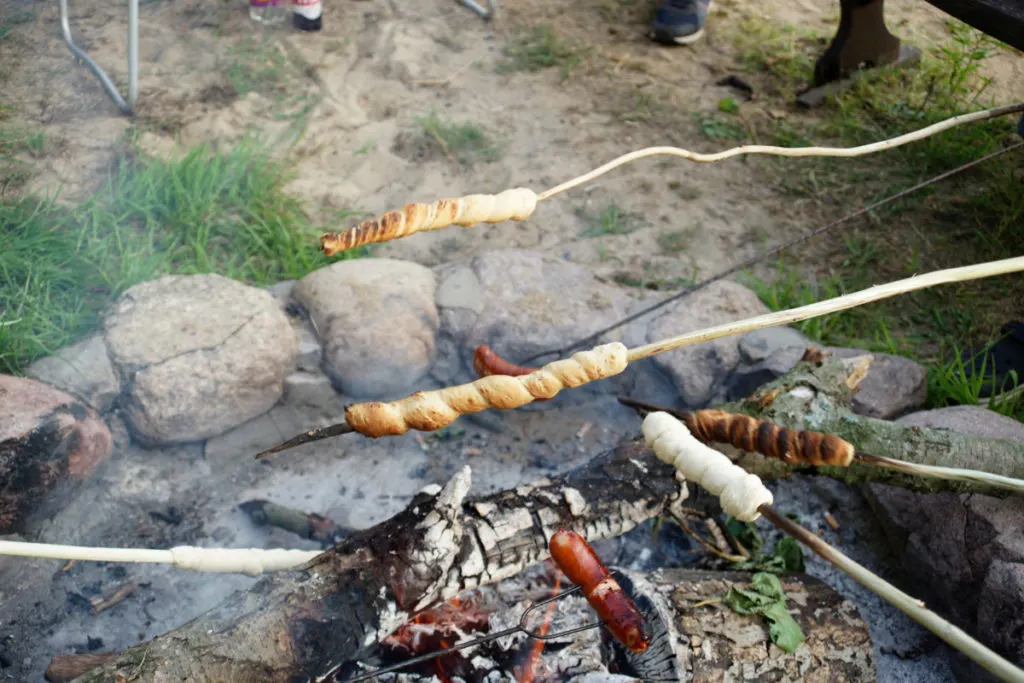
There’s nothing complicated about this recipe either. Once you’ve mastered the art of perfectly cooking bread on a stick (with no blackened crust), all you need to do is find the right stick for roasting sausages. Hot dogs are better suited to skewers, so for this pig in a blanket, you may need a grander sausage.
First, roast your hot dog/sausage. Then wrap it in dough. Cook until deliciously done.
If you don’t have all the ingredients for making your own bread, there is an easier way. It involves a can of dough, some ketchup or mustard and hot dogs.
Find the easy way to make pigs in a blanket at Delish.
5. Marinated Campfire Kebabs
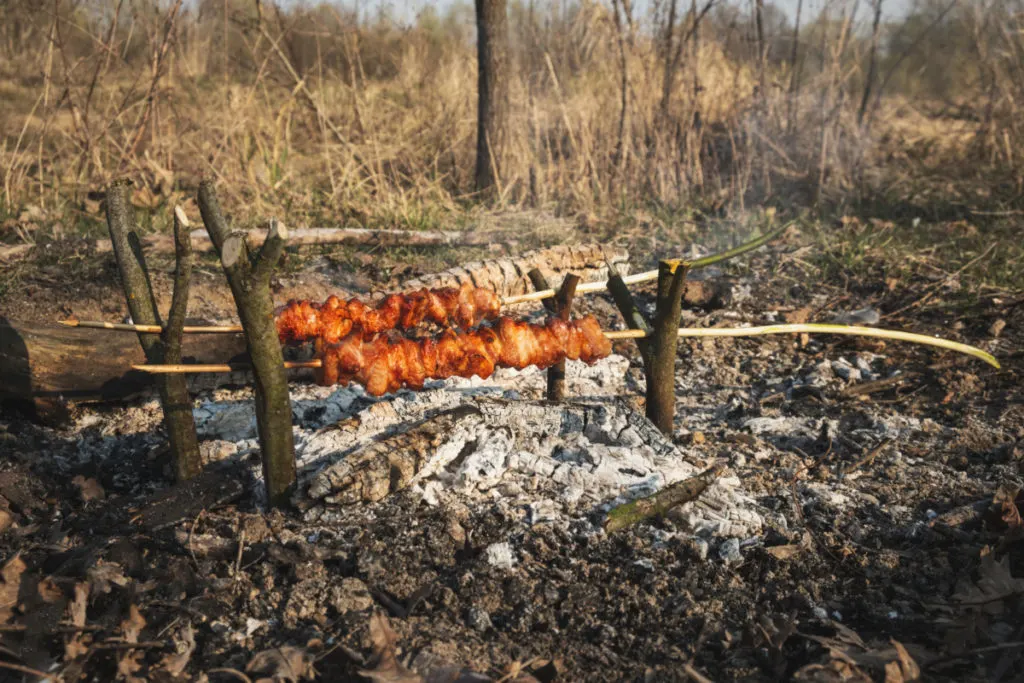
What’s a campfire for, if not for cooking meat? I’m sure our far-off ancestors would be proud to dine with us today, to sample new flavor combinations that help to tenderize the meat.
A marinade can be anything you want it to be, depending on the spices and oil you have at hand. Of course, it must match the meat as well.
If you are cooking chicken on a stick, here’s a gingery marinade for you to try at your next campfire:
- 1 tsp. black pepper
- 1 tsp. salt
- 1 tsp. grated ginger
- 4 garlic cloves, crushed
- 3 T. olive oil
- 1 T. lemon juice
Blend all ingredients together, pre-slice your chicken and let all pieces marinate for 2 hours.
Once the fire is ready, place chicken pieces on stick and cook over the hot coals.
For more marinade recipes that make cookouts even more delicious, head over to The Dyrt Magazine for more inspiration.
6. Fish On a Stick

Sometimes the best way to learn a new skill, is to watch someone else do it. For example, cooking fish on a stick over a campfire.
Of course, there is more than one way to do this. Here’s another video to watch.
Whether it’s freshly caught from a stream, or brought to camp in an iced cooler, cooking fish on a stick is one campfire trick that you have to try. Best of all, you don’t need to be in a survival situation to enjoy it.
7. Sausages
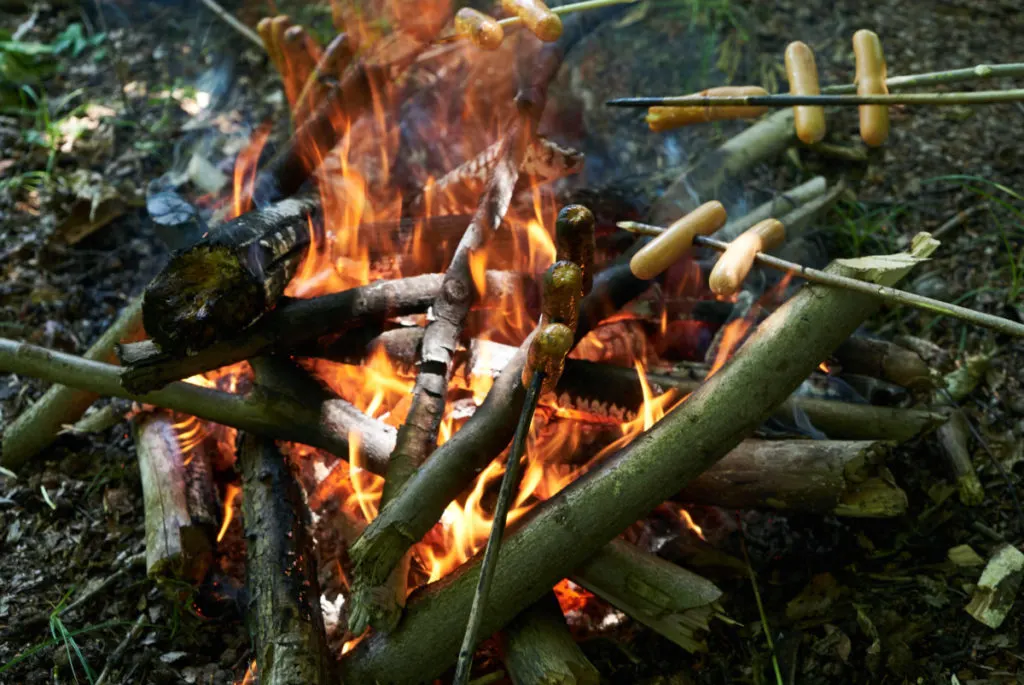
If hamburgers are out (try cooking them on a stick!), sausages are definitely in. Well, on. Speared, actually.
One statement of caution: sausages, hot dogs, in particular, have a tendency to burst when cooking. Especially when high heat is applied. Perhaps they are best when cooked in a pan, but for lack of that, a stick will definitely do in an emergency situation, i.e. you forget to pack that essential outdoor cooking item.
Don’t make the mistake of trying to skewer them long ways. Instead, poke the sausage directly through the center and pull it further down on the stick. Then add a few more.
It’s easy to cook more at once.
You can also use two sticks for more support, piercing the sausages closer to the ends.
How do you know when it’s done?
It’s the same as with cooking sausage over a grill. Toasted on the outside, juices dripping out, the aroma of a festival in the forest. You just know.
8. Rabbit
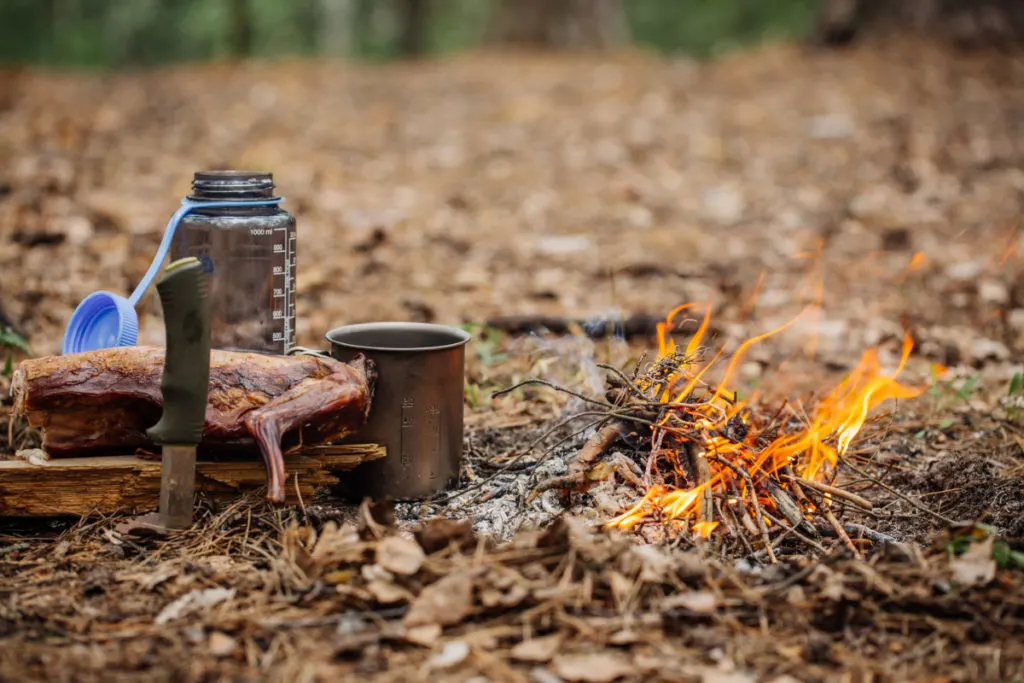
This is one for the outdoor enthusiasts and survivalists. If that doesn’t describe your outdoor style, gracefully scroll on to number 9 – toasted fruit with yogurt dip.
If you hunted it, you get to cook it.
There’s no need to get into the draining of the blood, the skinning of the rabbit, or the removal of organs here. Tactical Smarts has already described those processes and explained in great detail the best way to cook a rabbit over a fire.
For this, you will first need to create a spit, build your fire and season your rabbit. Then let the campfire do the rest of the work.
It takes anywhere from 20 to 45 minutes to cook a rabbit over an open fire, depending on the size, of course.
9. Toasted Fruit – With Yogurt Dip
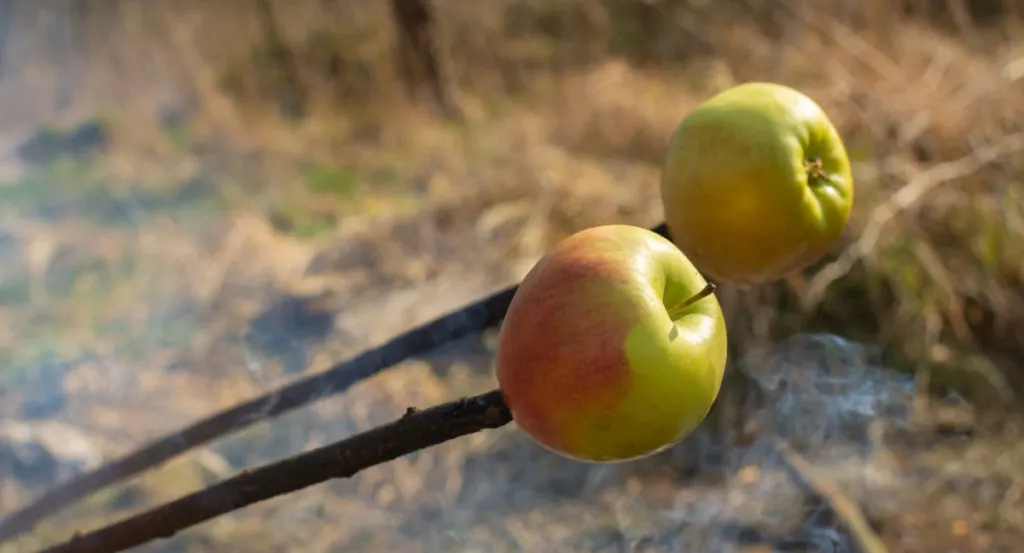
Fresh pineapples cut into large chunks lend themselves well to being toasted over the fire, though you probably won’t find them in the forest. Be sure to head to the grocery store before making a campfire, if you’d like to try this delicious treat.
Apples are another good choice of fruit to cook on a stick. Any fruit that is firm enough to withstand some time on a stick over heat will work. You can even toast whole bananas (with the skin on) over the fire, though I prefer banana boats wrapped in foil. That’s a no-fail recipe that always works out.
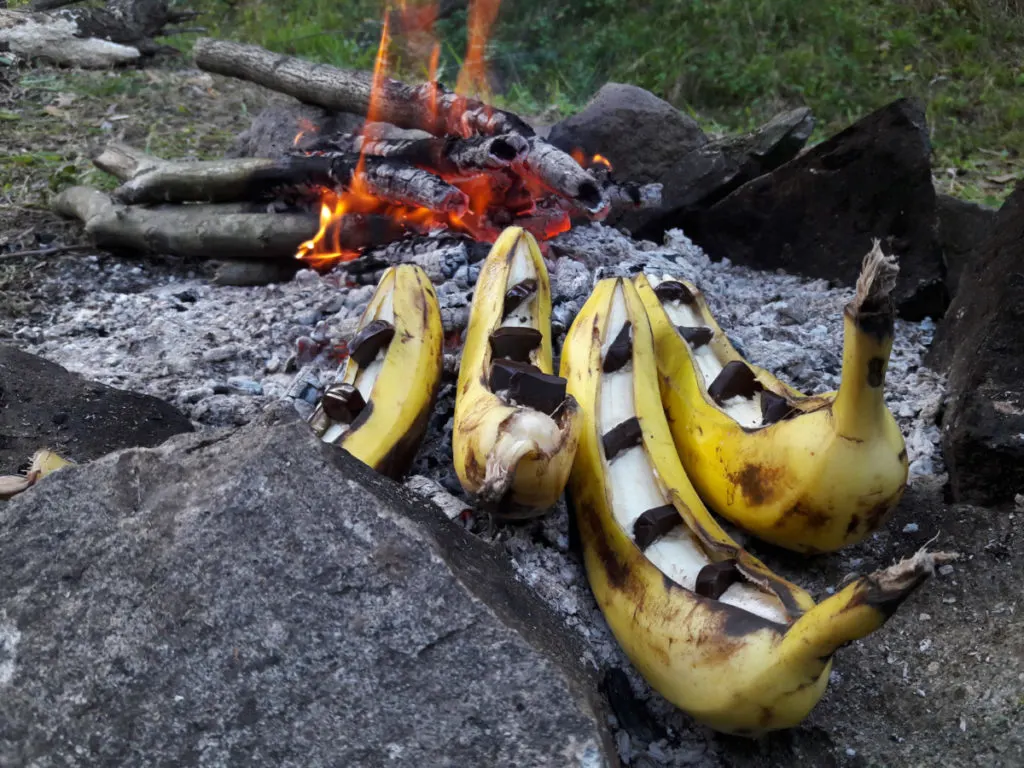
While toasted fruit on its own makes for an excellent dessert, know that an easy yogurt fruit dip can turn it into a smoke-stopper, er, show stopper.
All you need to make fruit dip is three simple ingredients:
- full-fat Greek yogurt
- honey
- spices (cinnamon, nutmeg, a pinch of cloves)
Mix all ingredients together and store for up to a week in the fridge before serving.
10. Steak
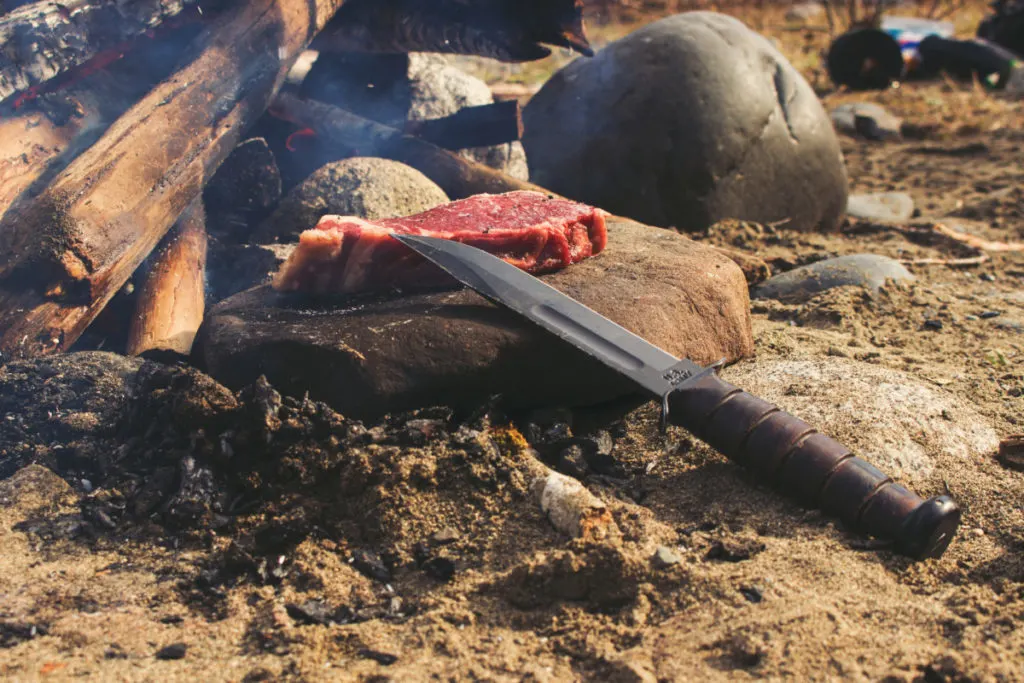
If you simply can’t spear it, chances are still good you can grill it.
In the case of cooking steak over the campfire, this applies to sausages and hot dogs too, all you need to do is make a grill with green wood.
Take several branches of willow, hazel or other suitable wood, and place them about an inch apart several inches over the glowing embers. You can accomplish this by propping them up over unburnt logs or flat rocks.
Use what you can find from nature, then toss that steak over the green sticks and cook it to perfection.
Read this article from Outdoor Life, before you get started with grilling over the campfire: How to Build a Green-Wood Grill for Camp Cooking
And, of course, marshmallows.
Marshmallows aren’t so much of a food as they are an occasional treat.
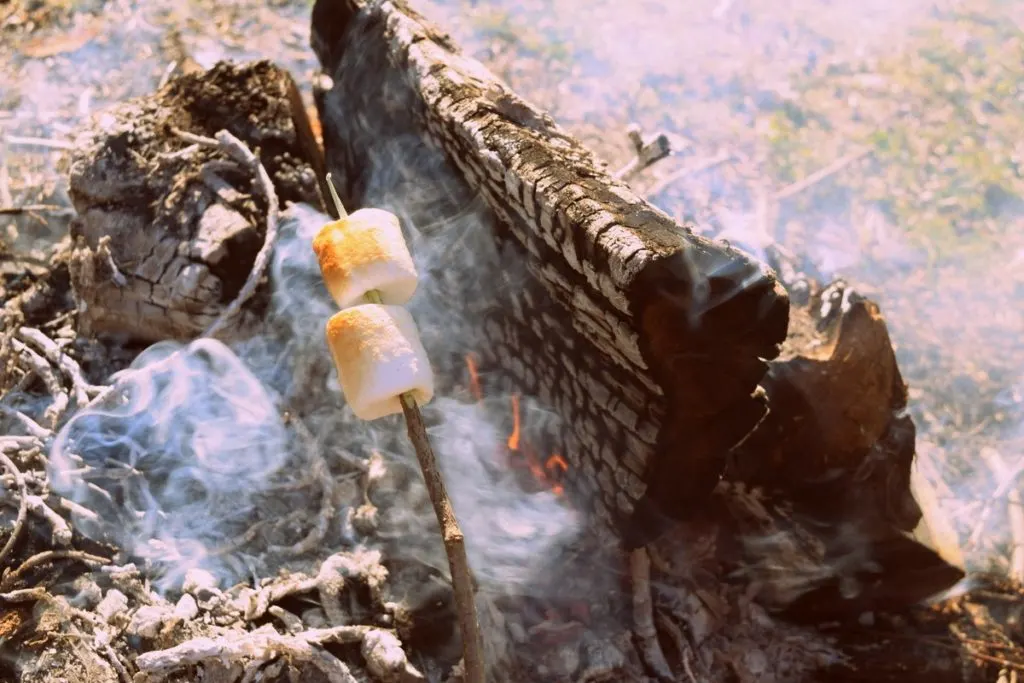
While you have some sticks gathered and sharpened, with a random long-lasting bag of marshmallows hiding in the cupboard for the rare campfire, don’t forget to toast them to your delight as well. Or burn them to a crisp. Blackened marshmallows are charcoaly delicious.
For those of you who truly like to make s’mores, here are six sweet twists on the classic campfire dessert.
Did you know that, even without a campfire, you can toast a marshmallow over a beeswax candle? Just poke it on a toothpick and voila – it’s done in a flash.
Of course, anything cooked over the campfire is always better. When the weather and time allow, get outdoors and build a small fire; dinner is only a handful of hot coals away.
A Word Before You Go: Campfire Safety
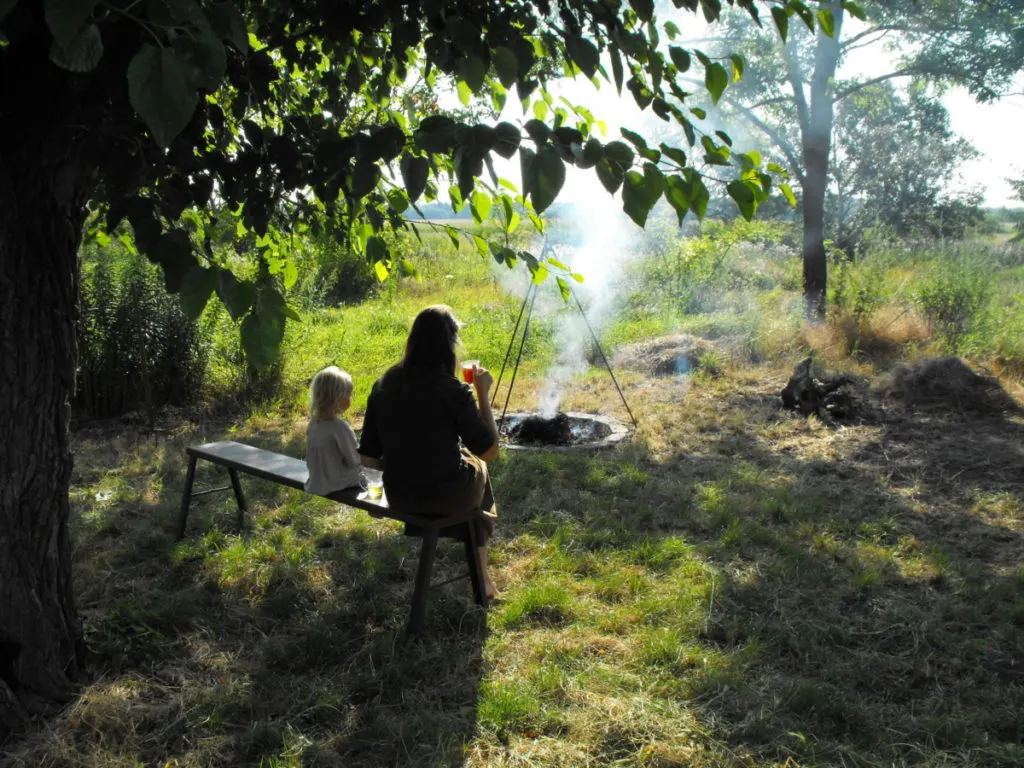
We could’ve stuck this at the top, but we trust you’re here primarily for the recipes. Besides, one needs to trust their own wisdom and intuition.
Yet, fire safety is such a big issue.
Always:
- Be aware of the weather – calm and clear is ideal.
- Use dry/seasoned wood for a clean-burning fire.
- Build the right kind of fire in the right place – watch out for low hanging branches, exposed tree roots, leaves and anything else that could catch on fire.
- Have a source of water nearby – a bucket, creek, river, etc. Sand or soil also works well for containing fires.
- Be ready with leather gloves for tending the fire.
Never:
- Burn wet/green wood – it will be smokey, rarely hot enough to cook and will pollute the air.
- Use plastic utensils that melt in high heat of the flames and coals.
- Fry fatty/oily foods that can flash ignite.
- Start a fire in high winds – save your campfire cooking for another day.
When cooking over a campfire, be sure to have plenty of reliable drinking water on hand as well. Or, have ways to purify it before using it.
Whether you choose to sing around the campfire, or not, we do hope you enjoy some newfound ways of cooking food on sticks.

Get the famous Rural Sprout newsletter delivered to your inbox.
Including Sunday musings from our editor, Tracey, as well as “What’s Up Wednesday” our roundup of what’s in season and new article updates and alerts.

